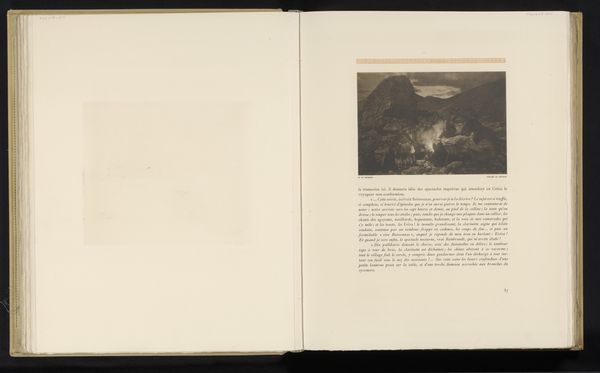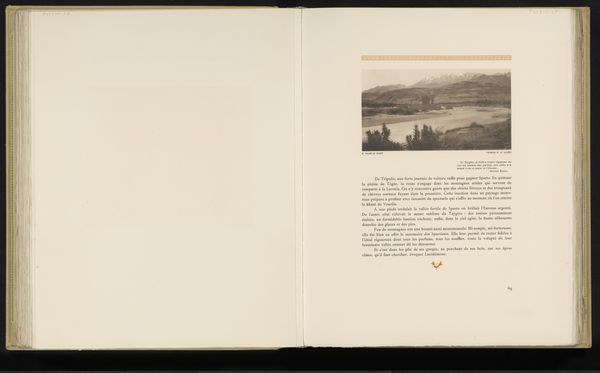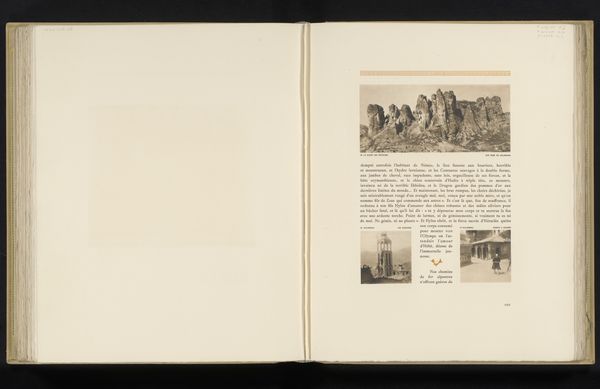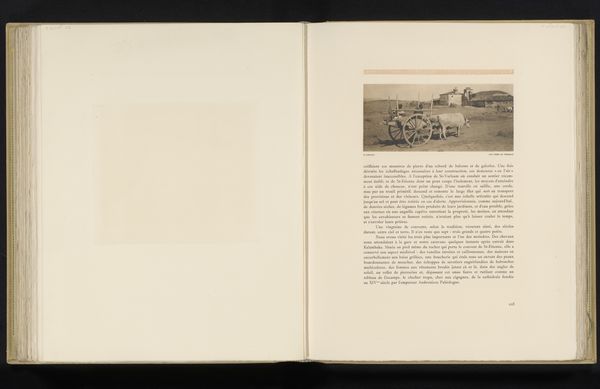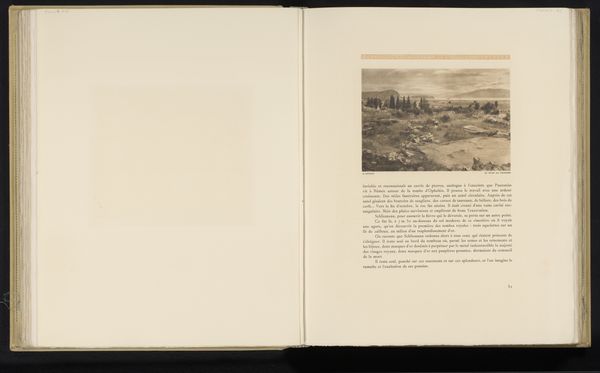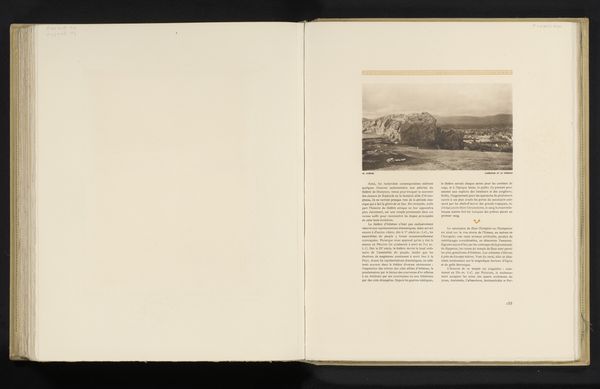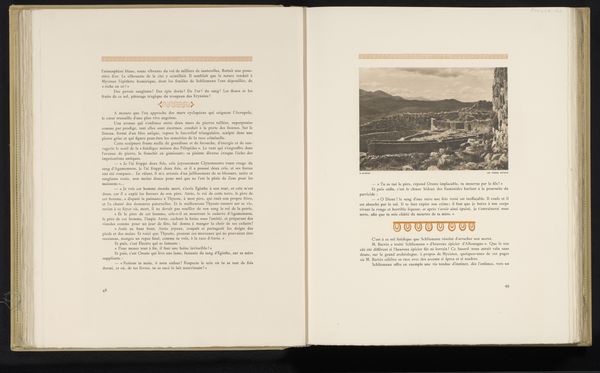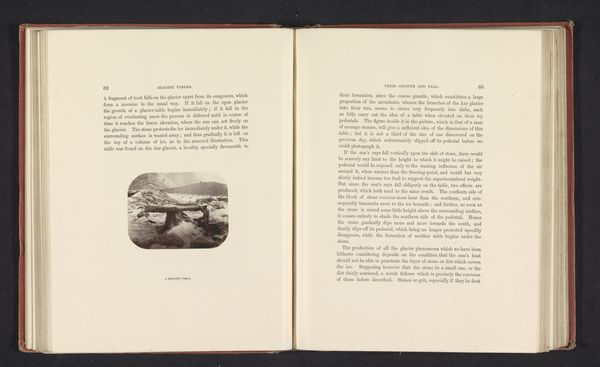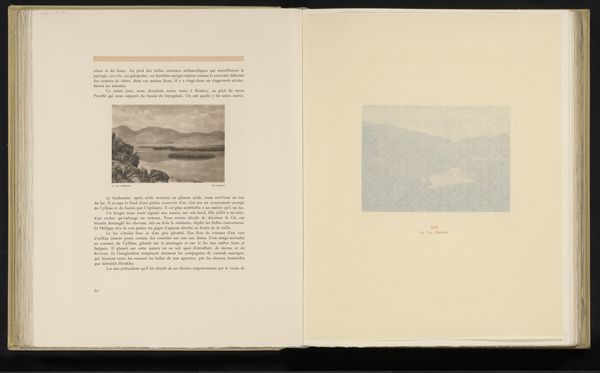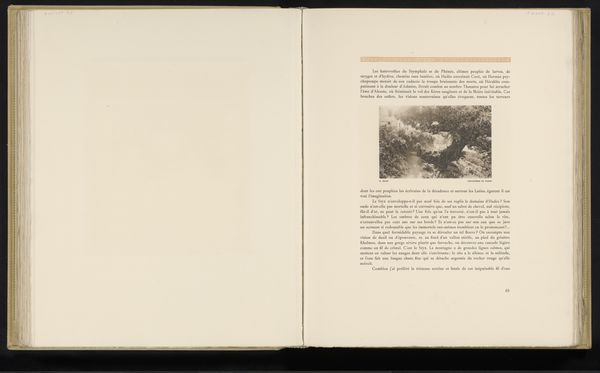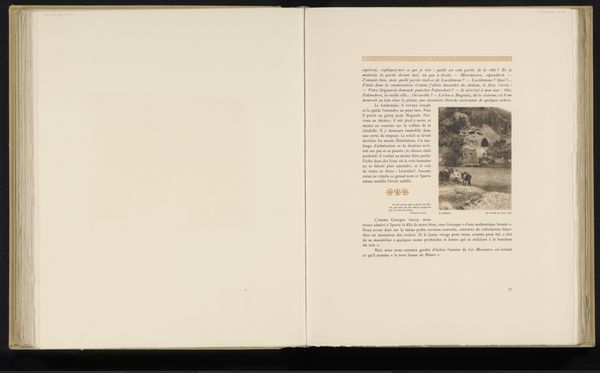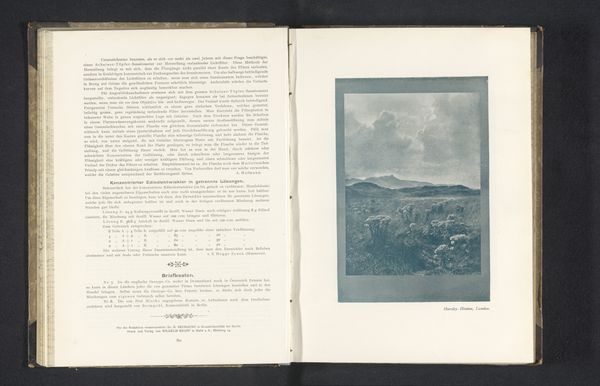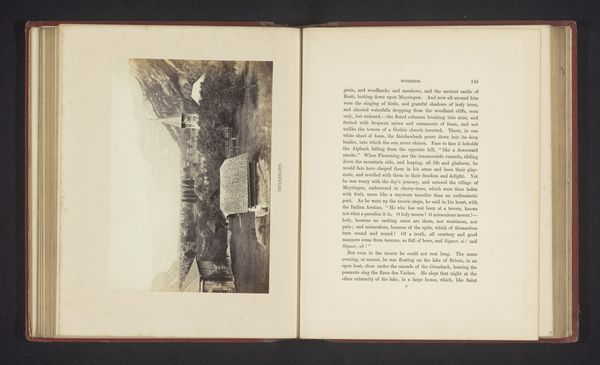
Boeren bewerken het land nabij de ruïnes van de Zeustempel in Nemea before 1910
0:00
0:00
photography, gelatin-silver-print
#
landscape
#
photography
#
ancient-mediterranean
#
gelatin-silver-print
#
history-painting
Dimensions: height 117 mm, width 225 mm
Copyright: Rijks Museum: Open Domain
Curator: This photograph, captured by Frédéric Boissonnas before 1910, is titled "Boeren bewerken het land nabij de ruïnes van de Zeustempel in Nemea," which translates to "Farmers working the land near the ruins of the Temple of Zeus in Nemea." It's a gelatin-silver print depicting rural life alongside ancient ruins. Editor: The immediate impression is of an odd serenity, isn't it? A soft sepia tone pervades the image, almost like looking into a faded memory. The farmers and oxen in the foreground appear timeless, shadowed by those looming ruins. Curator: It’s precisely that juxtaposition I find compelling. We’re looking at a slice of early 20th-century Greece, yet the presence of those ruins forces us to confront the long shadow of classical antiquity, to explore notions of temporal linearity versus cyclical history. What are the implications when remnants of past power stand in relation to ongoing economic disparity? Editor: The ruin acts as a silent witness. The crumbled stone carries not only the weight of Zeus but also the countless lives touched by his cult. Temples as locations for celebration, political planning, sacrifices, community disputes, etc. We tend to look at classical sculpture extracted from the architectural site, and in so doing flatten a multi-dimensional experience to single image; the ruin provides a framework to examine complex historical and psychological narratives. Curator: Precisely! How often do rural narratives, such as agrarian labor or peasant life, act in direct conversation with classicist narratives in our museums and our studies of visual art history? By showcasing everyday labour adjacent to monuments, Boissonnas asks us to think through systems of access, privilege and class in connection to the ancient and modern worlds. Editor: Boissonnas presents a compelling visual dialogue between past and present, an enduring cycle. What endures and what fades? Perhaps it questions the perceived superiority of any era. Curator: A valuable meditation. Boissonnas's work serves as a visual probe, urging us to analyze how cultural narratives surrounding progress and preservation have been built on unequal distributions of access, influence, and agency, across lines of historical time. Editor: The image asks how history informs the present. It also acts as a symbol of collective memory. A site-specific record of place that transcends time.
Comments
No comments
Be the first to comment and join the conversation on the ultimate creative platform.
